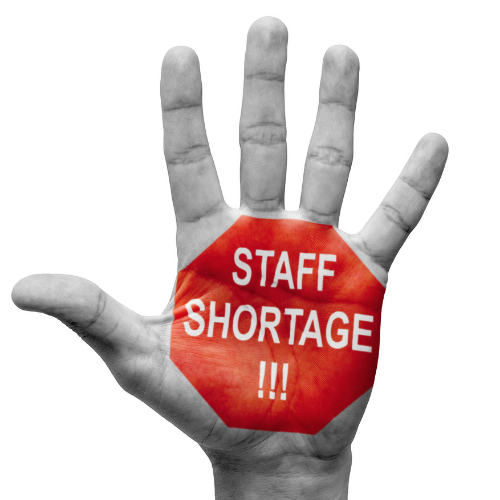Women Entrepreneurs – Managing Work/Life Balance
Sara Blakely, founder of Spanx, is a billionaire businesswoman and was named one of Time magazine’s 100 most influential people in the world. As a female entrepreneur whose lingerie invention created a multi-million dollar business, she understand the challenges many women face at work. It wasn’t until her health became affected, as well as her ability to think clearly, that she realized she needed a better home-work balance. Sara was quoted in a recent article done by the Balance Project: “I just layered the full-time job of being a mom on top of another full-time job at Spanx and then wondered why I was so exhausted. I started to notice changes in my health and couldn’t think as clearly. I feel like this happens to a lot of women. We just assume we will figure it out. There is no manual, and no way to truly prepare.”
Sound familiar? Obviously, you don’t need to be the founder of a multi-million dollar business to feel the strain of work-life balance, it happens to all of us who have a job and a life outside of work (or would like to have one.)
You aren’t alone in the work-life balance struggle!
Women-owned businesses have increased 114% in the US over the last 20 years and despite the talk about equality, women still do far more work at home than men. There is a lot of pressure placed on female entrepreneurs which can affect their performance in the workplace. As Sara Blakely said, eventually the strain began to affect her health. To fix these stressors in any woman’s life, they must be ready to restructure their day-to-day tasks and strive for the right attitude while allowing for flexibility. In today’s blog, we’ll give you a few things to implement to help you achieve a better balance in your very busy life.
How do you find that work-life balance everyone is looking for?
We’ve done our research and have found the 7 most proven tips and techniques to help you achieve a more comfortable balance between work and home/life.
1 – Give yourself a break!
We all do it – we look at other women, especially those who make it look easy…and feel like we are failing in comparison. Stop doing that! Any time you compare yourself, whether it be positively or negatively, it will hamper your growth and stunt your self-confidence. Instead, focus on your goals and on the things you, yourself excel at; it will help you achieve more.
2 – Learn to say no.
If it helps to put a magnet on your fridge that says: “Stop me before I volunteer again”, do it! It is easy, especially as a mother and wife, to accept tasks out of guilt or a sense of obligation. Evaluate your priorities at home and at work and look at what is on your “to do” list. Before you commit to anything, (like becoming the PTA chair) take a hard look at what you are agreeing to do. If the activity doesn’t benefit you and your business, or if it will cause you more stress than you really want in your life – say no. Accept the tasks that bring your joy and are meaningful to you – and only if you honestly have time for them.
3 – Schedule your time.
Look at your current schedule and identify what is working and what is not. If Ms. Talks-a-Lot from the store next door is taking valuable time out of your schedule, figure out a way to limit your exposure to her. Look at timewasters, like social media. Are you getting sucked into those Face Book rabbit holes? Set a timer and allow yourself a specific amount of time for each activity. Delegate the tasks that can be given to someone else and try to schedule like-tasks together.
4 – Accept help.
We know you can do most of your tasks better than anyone else. For instance, have you re-loaded the dishwasher after your significant other did it “wrong?” Part of accepting help is accepting the fact that the task may not be done the same way you do it, or to your specifications. However, the end result is the same: the dishes got clean, even if those spoons were put in the wrong container or if the glasses weren’t stacked according to how you put them away.
5 – Get Real.
You may not achieve that perfect life-balance…but you can get close to it with less stress. Accept the fact that some things will be late, that you may not be able to complete some tasks, or that some things will not go as planned. Try to keep in mind that flexibility is key.
6 – Have Healthy Habits.
It’s already stressful, trying to juggle all things work and life related; make sure you are taking care of your health too!
- Set a regular bedtime schedule and stick with it (it’s so important to get the rest you need.)
- Exercise regularly, rather it’s a walk at lunch or an elliptical zoom call. Makes sure you schedule your exercise routine into your schedule.
- Eat well. Are you eating empty calories that cause the sugar crash right around 2pm? Instead, grab a healthy alternative and be mindful of the food you are consuming.
- Don’t forget mental health. Employing a work or life-coach can make a major difference in your balance. Counselors and psychiatrists can help you understand if what you are dealing with is “normal” and give you tips on how to have and create a better balance.
7- Learn to Delegate.
Sure, it sounds easy, but delegating is one of the hardest things to do for women entrepreneurs. Why? The truth is, you are an entrepreneur because you CAN do it better! It’s difficult to give those tasks away, but it will help you in the long run. Start small, assigning tasks to individuals at work and at home, then start to look for more opportunities to take jobs off of your own plate. Hire help for specific tasks rather it be a driver to pick up your kids each day, or a housekeeper to cook and/or clean.
Achieving the perfect work-life balance takes…work! The most successful women entrepreneurs will tell you it’s a constant “work in progress.” It is worth it in the long run, so keep trying!
For additional information and ideas on how to achieve and maintain the perfect life-work balance, please contact us at the Small Business Development Center – SBDC – Serving Paris area: Lamar, Hunt, Hopkins, Delta, and Red River counties.










